The path from “a bug’s land” deposits guests back on the “Performance Corridor” that serves as a sort of spine for California Adventure. Standing at the foot of Grizzly Peak, turning right would return us to Carthay Circle; turning left would lead onward to Pacific Wharf and the pier. So before we head there, let’s circle around to the Carthay and head toward Soarin’ to round up our experiences there.
Condor Flats
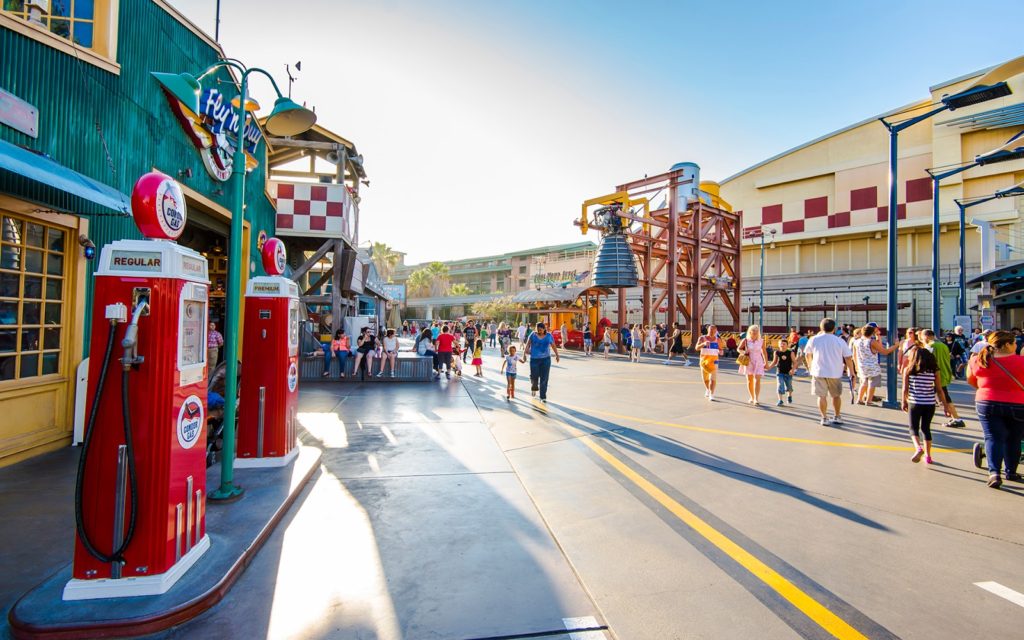
When Disney’s California Adventure opened in February 2001, “Condor Flats” was one of the six “sub-districts” making up the all-encompassing Golden State land. Mostly comprised of an asphalt runway running parallel to the arching hangar housing Soarin’, the area was meant to evoke the feeling of an arid, expansive, desert air strip dotted with red desert rock and lined with palm trees.
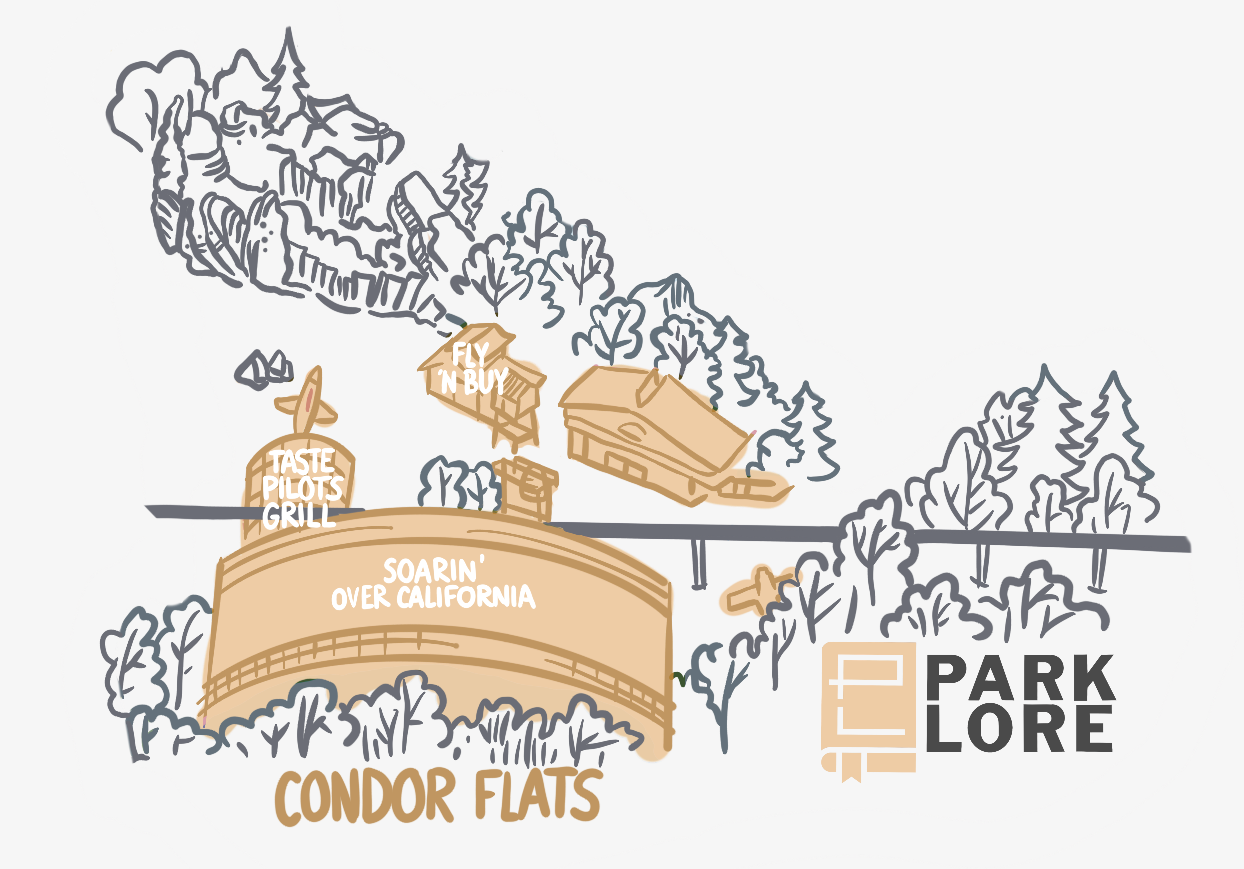
Like the rest of the lands in “DCA 1.0,” there were hints of a more historic time for Condor Flats, and the implication that in its “heyday” it had been an aviation destination for Air Towers in propeller planes… but of course, those days were long gone. Instead, the area was also strewn with rebar and steel, emphasizing Condor Flats as a modern militaristic base and industrial scrapyard where – for example – the dangling thruster of a retired rocket doubled as a misting station.
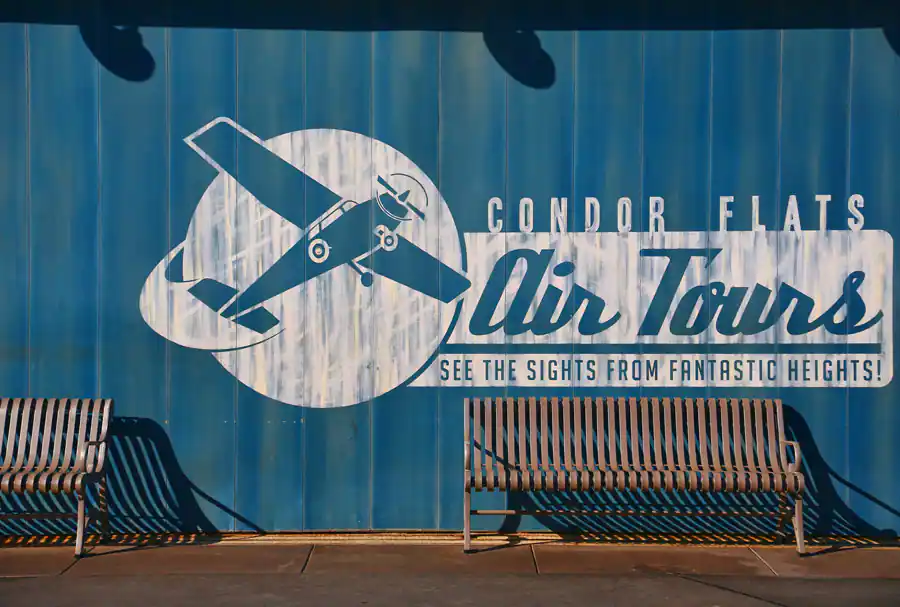
Condor Flats’ most undeniable issue is that the land never really felt like a desert landscape, much less a representation of California’s arid deserts. How could it? Looking down the runway, the hangar housing the Modern Marvel: Soarin’ Over California filled the view to the right, while to the left was a visual “berm” formed by the heavily-forested rocky slopes of Grizzly Peak. At the end of the runway, views into the neighboring, National Park-inspired land positioned the multi-story Grand Californian Hotel as a lodge nestled in an evergreen forest, further weakening the idea of a desert airfield.
As of the official re-opening of Disney California Adventure on June 15, 2012, the six sub-districts within the Golden State were treated in one of three ways… Either…
- absorbed and combined into one another (for example, the “Golden Vine Winery” and “Pacific Wharf” sub-districts were combined into a land called Pacific Wharf);
- ceded to existing lands in the park (for example, “The Bay Area” became part of Paradise Pier and “Bountiful Valley Farm” was eaten up by Cars Land);
- upgraded to full, standalone “land” status
Along with Grizzly Peak, Condor Flats was bestowed with the third choice, elevated into a full “land” within the hierarchy of the newly-reimagined park.
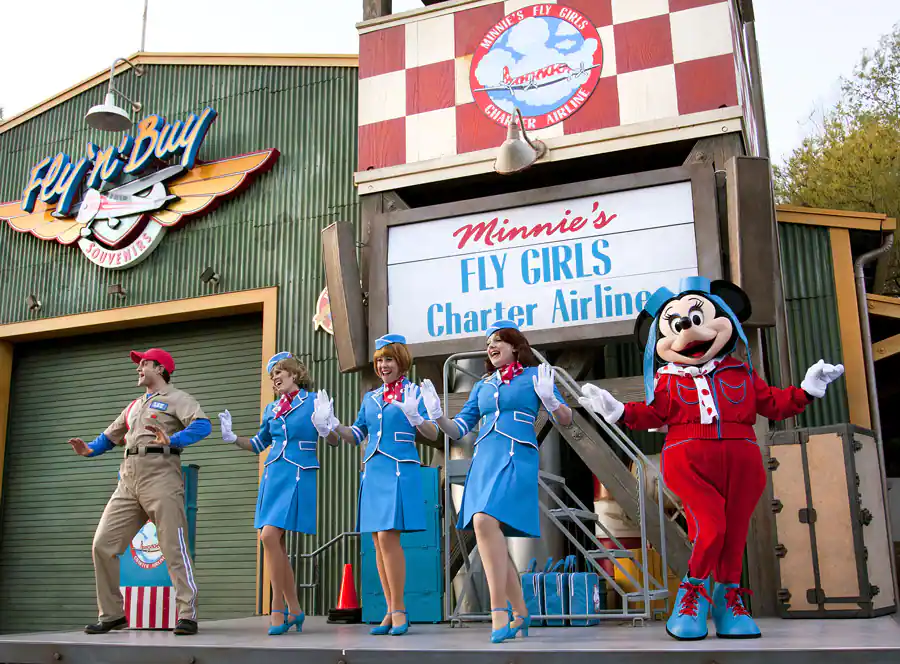
For Condor Flats, the only real change was the addition of Minnie’s Fly Girls – an excellent sing-and-dance pop-up show wherein Minnie was joined by a cast of flight attendants and mechanics singing swing music from the ’40s and ’50s. It was an easy way of “turning back the clock” for Condor Flats through music and costuming, even if the land visually remained an outlier in the reborn park for its modern, industrial appearance.
But behind the scenes, Imagineering was working on a solution…
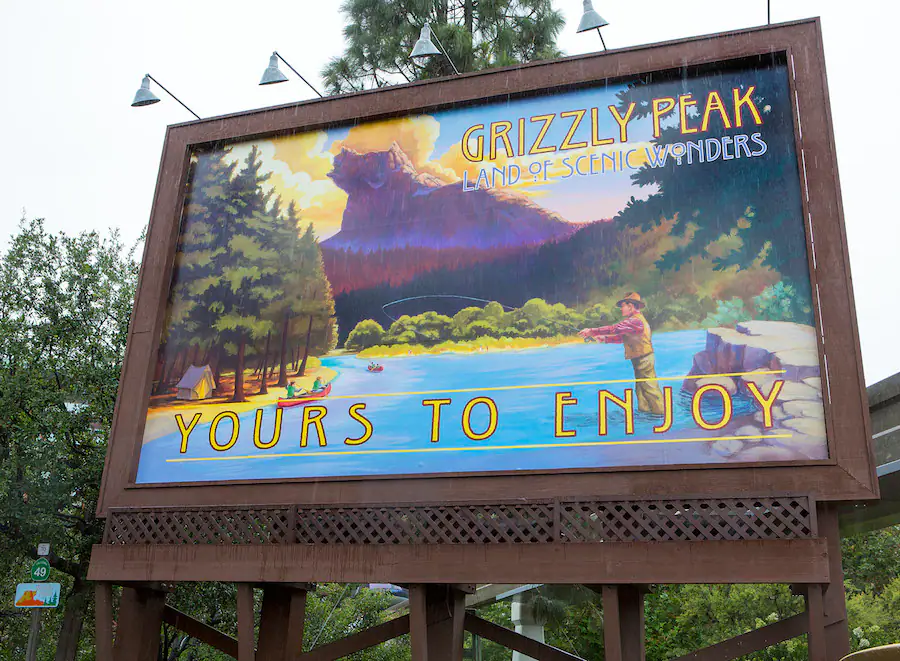
After years of proudly displaying the pun to “Bear Left” to Grizzly Peak, the billboard set at the end of Condor Flats’ runway became a wonderful, period appropriate image of visitors fishing, canoeing, and camping at “Grizzly Peak – Land of Scenic Wonders.” It turns out that that was a hint of what was to come for Condor Flats… But we’ll return to that shortly.
In the meantime, the runway curves to the left and heads into the dense evergreens of Grizzly Peak, likewise elevated to full “land” status and lovingly reimagined…
Grizzly Peak National Park
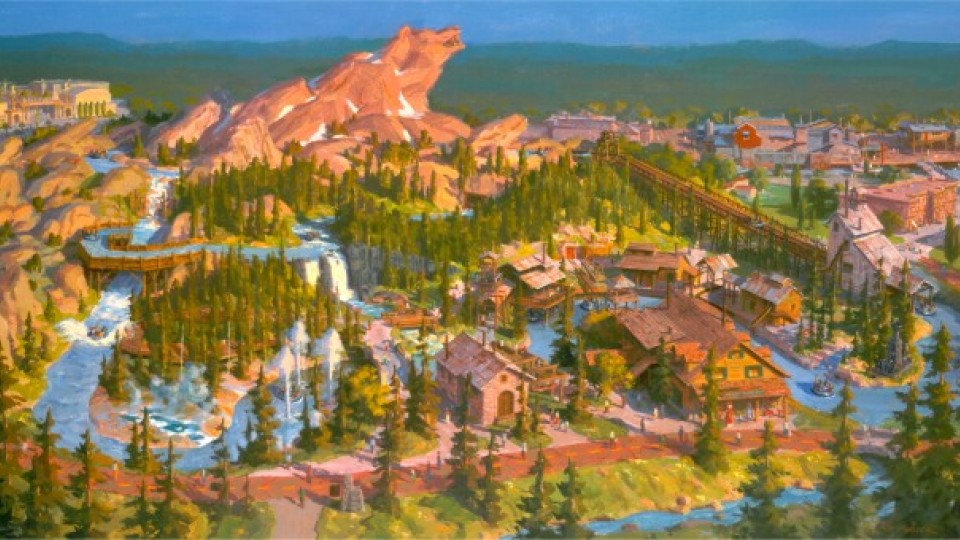
Even in 2001 when “Grizzly Peak Recreation Area” was a “sub-district” of the Golden State, this area of California Adventure was a clear stand-out. Back then – when the trees were new plantings – there was still a magic inherent in the winding trails beneath pine trees; misty, rocky canyons fed by gushing waterfalls; tin-roofed log buildings, geysers, and gold mills. Plus, in a park that famously did very little to screen out visual intrusions, Grizzly Peak benefitted from being nestled into the forested mountainside, and from the Grand Californian Hotel, serving as an “in-universe” lodge for the “real” Grizzly Peak park.
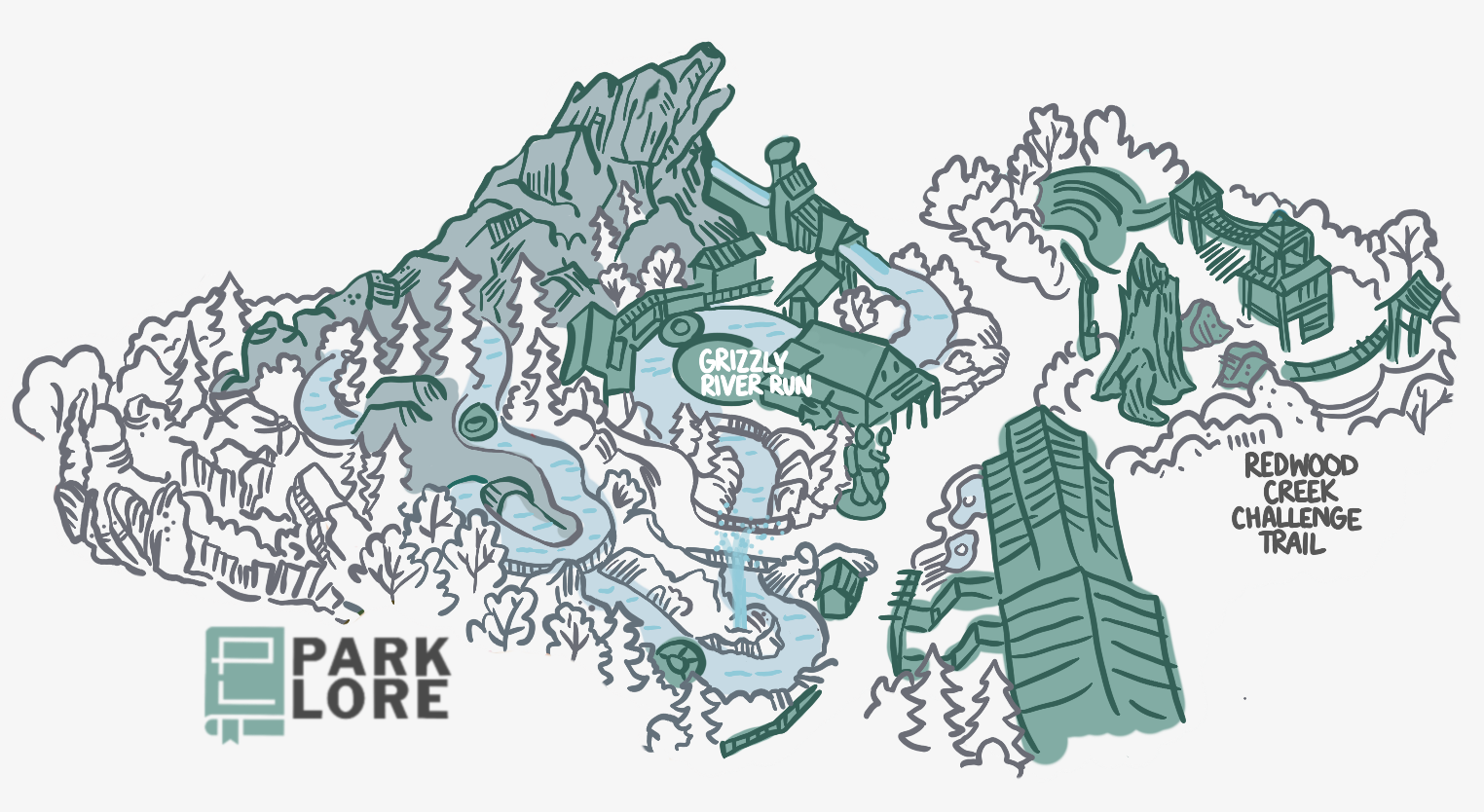
About all that ailed Grizzly Peak was – you guessed it – its resistance to being the historic, timeless, idealized place it was clearly meant to be. Instead, “DCA 1.0” went to great lengths to communicate that we had not traveled back in time to some heyday of the National Park. Nope. Instead, we were visiting the “Recreation Area” of Grizzly Peak today, where an extreme sports collective had set up shop, mercifully giving up something “x-treme” to do in such an otherwise inherently boring environment.
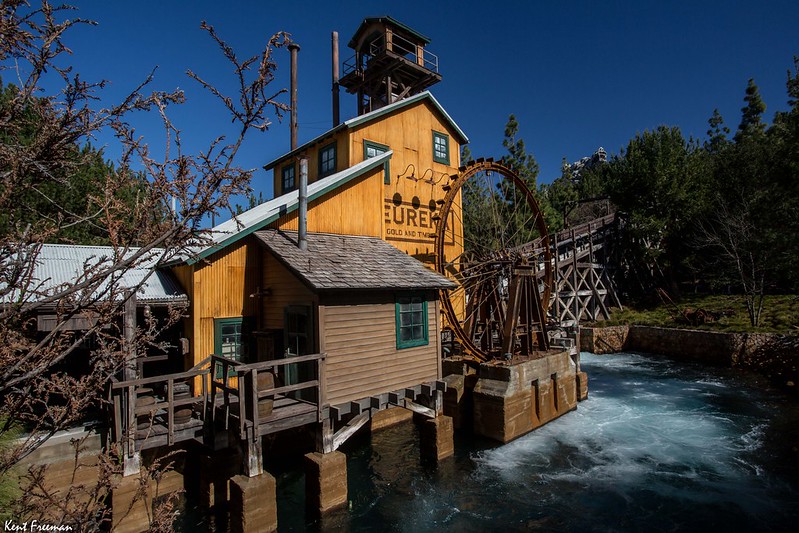
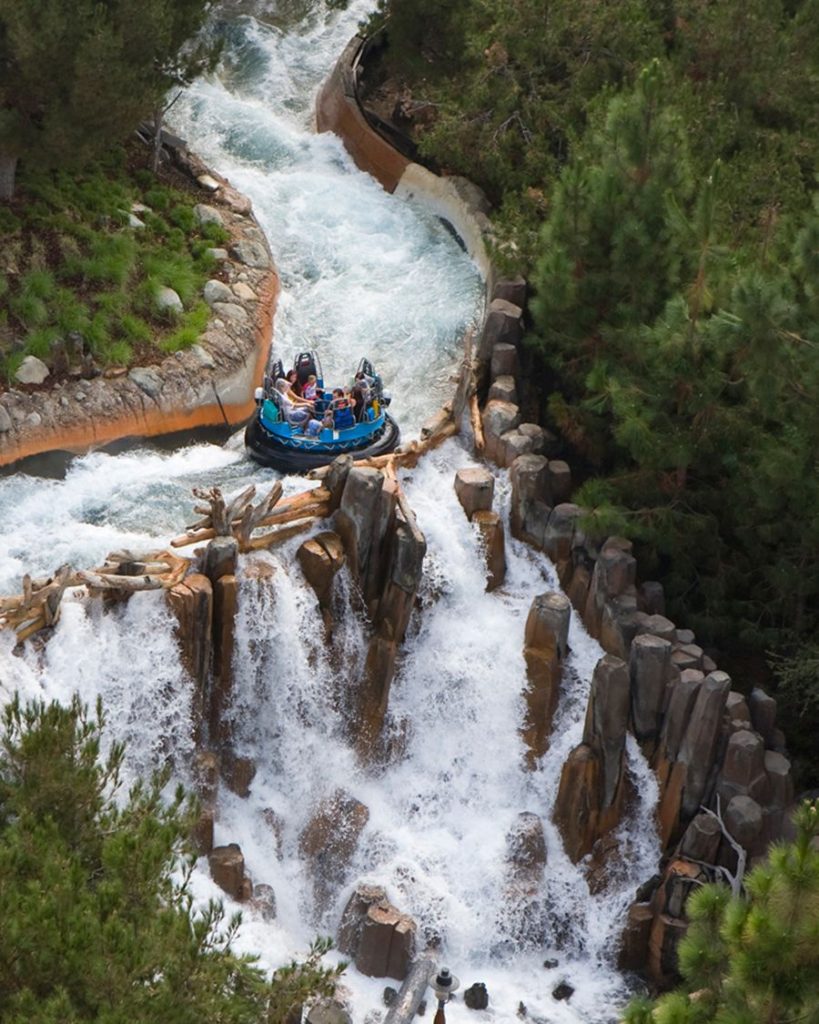
We can be thankful that that clock has officially turned back. Remnants of the “extreme sports” wrap to the land were removed entirely. Throughout the land, intentionally-faded structured were revitalized. Rather than a dilapidated old water wheel, the gold mill was repainted and brought to life as the functioning mill of the Eureka Gold and Timber Company.
That narratively turned Grizzly River Run from some white-knuckle modern thrill ride into a sanctioned family adventure offered by the National Park Service; a wet and wild wildlife trip through the rivers, caverns, and canyons of Grizzly Peak.
Likewise, just by changing the placemaking to turn back to the clock and harken to the age of cross-country roadtrips in the Rambler, the new Grizzly Peak re-contextualizes the Redwood Creek Challenge Trail into a sort of interactive, explorable training facility for Park Rangers.
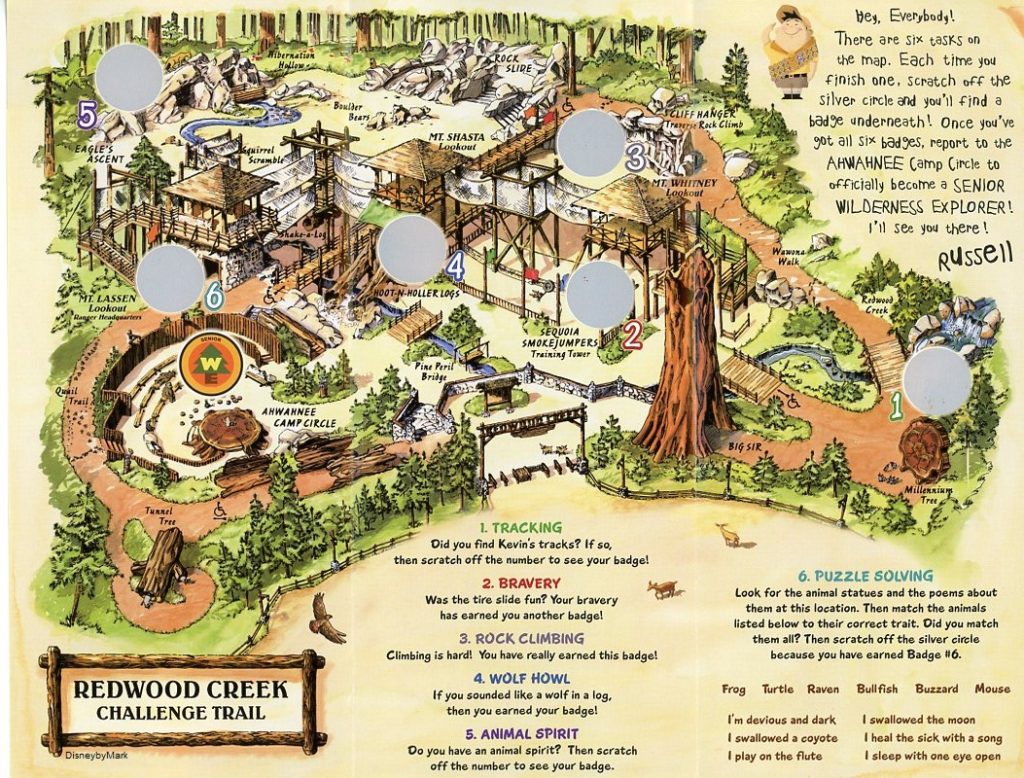
Boots-on-the-ground, that’s incarnate as a tie-in with Disney and Pixar’s Up, allowing guests to collect “Wilderness Explorer” badges by participating in interactive experiences throughout the area, like animal tracking, rock climbing, and matching Native American legends to the carved wooden animal figures they represent. It all culminates in a finale “Wilderness Explorer Badge Ceremony” at the Campfire Circle.

The result is that changes to Grizzly Peak aren’t really quantifiable. You won’t find a new ride here (even if fans begged for a return of the Lost Legend: Country Bear Jamboree). There’s not any particular thing added or subtracted that instantly makes all the difference. Even the giant, wooden bear whose paddles changed from rubber to wood is something most guests would never notice. Between 2001 and 2012, the park map wouldn’t signal any changes to Grizzly Peak.
You may not be able to put your finger on a single, tangible thing that’s changed. Yet Grizzly Peak is different like all of the park is different. It’s in the new, reflective orchestral score that plays throughout the land; in the warm, flickering lanterns in the trees; like so much of “DCA 2.0,” it’s in the spirit.
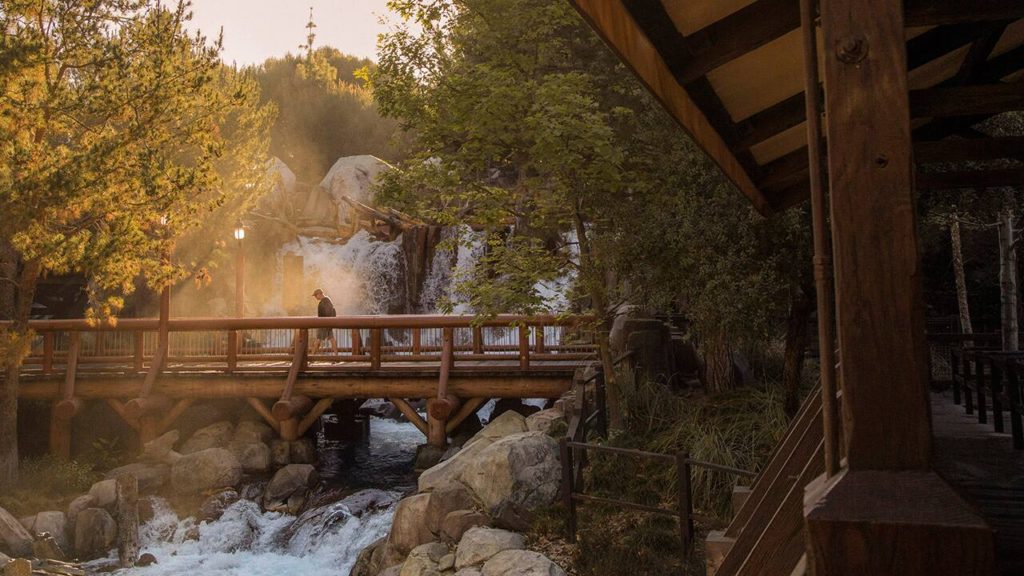
Put another way, Grizzly Peak now lives up to the potential imbued within it in 2001; it’s finally what it was always meant to be. Deep, rich, textured, historic, and idealized, it’s a place where you can get at least a little lost. It can be quiet. Contemplative. Adventurous. Reflective. Romantic. It’s misty and cool; rustic and powerful; a land that embodies what a difference a new foundation can make to bring out what already was there.
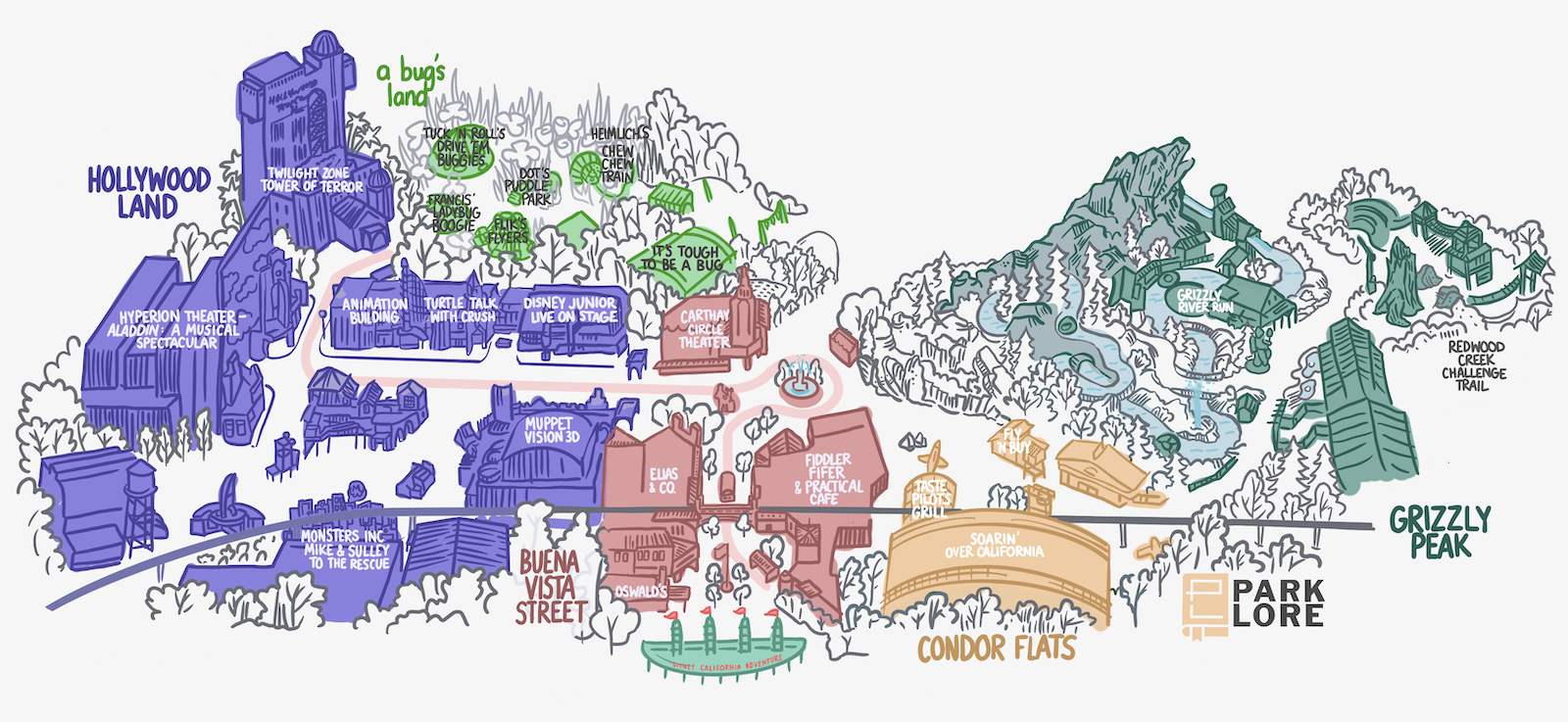
Speaking of which…


